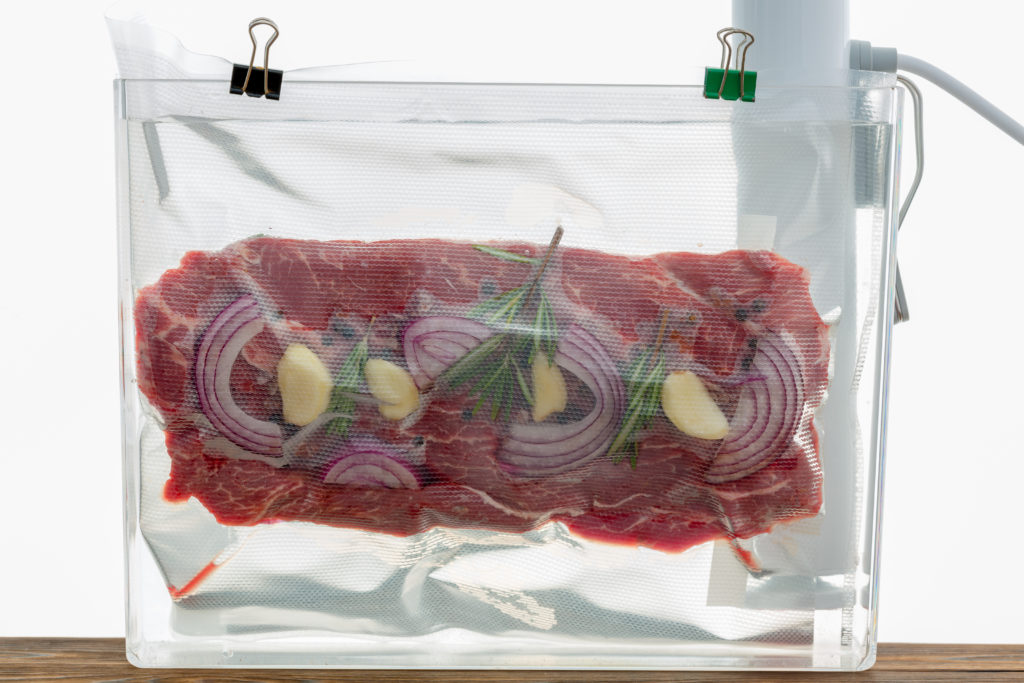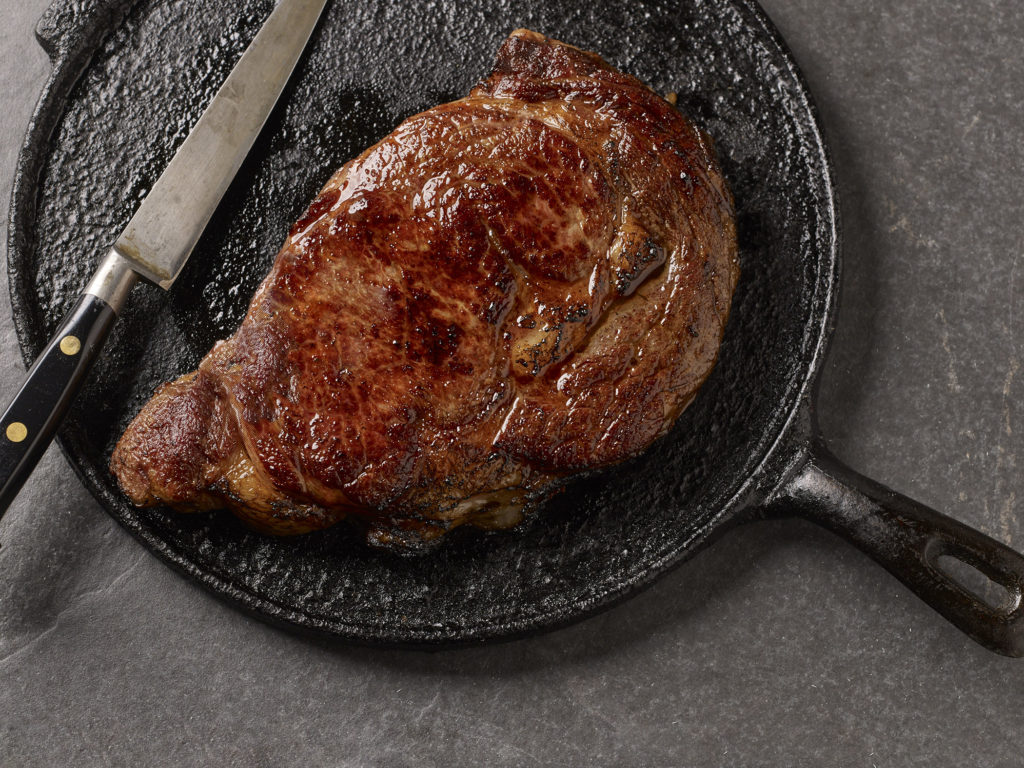Two of the most popular new appliances on the market are instant pots, otherwise known as multi-function pressure cookers, and air fryers, an appliance that uses convection cooking—rather than hot fat—to produce crispiness.
In recent years, it has seemed as if instant pots and air fryers were going to slug it out as to which appliance would win the battle for limited counter space in home kitchens.
Then, sous vide came into play when the technology was scaled down from large-scale, heat-and-eat product manufacturing to an appliance that fits on your countertop.
Sous vide is French for "under vacuum," a warm water-bath method of cooking that offers epicureans at home a level of predictable precision like no other cooking method, producing consistent results every time. 
So What is Sous Vide?
Sous vide is a French-originated cooking method in which vegetables, meat, seafood, and more are enclosed in a vacuum-sealed plastic bag, placed in a warm bath of water (90 to 137°F) and cooked for an extended period of time (anywhere from 1 hour to 10 hours).
The method allows for precise internal temperature control, so the result is reproducible. If you want a perfect medium-rare steak (130 to 135°F), that's what you'll get—time after time after time.
The three main controls of sous vide are temperature, pressure, and time. There is an excellent history of sous vide cooking on the Cook's Illustrated website.
To complete the home sous vide experience when cooking steaks, you can reverse-sear the meat in a hot pan once removed from the sous vide bath and vacuum bag.
Here's an in-depth video series of sous vide by Boston area vlogger and cooking school owner, Helen Rennie.

Equipment
Sous vide is relatively easy to set up. You can use any heatproof pan (such as a stockpot or Dutch oven) that is large enough to hold the item you want to cook. The heart and soul of sous vide is the immersion circulator that regulates the flow and temperature of water during the process. The circulator looks like an immersion blender that sits on the edge of the cooking vessel.
According to tests done by Cook's Illustrated, the top immersion circular was a unit made by Joule, which sells for about $199. The second-place circulator is made by Anova and sells for about $159. The Anova placed first in other ratings and reviews. Both units are Bluetooth ready with an app that controls the process remotely.
Have you tried sous vide cooking at home? What are your favorite things to cook with sous vide?



Leave Your Response